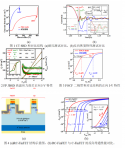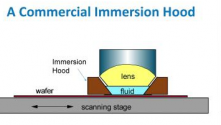The first domestic 12-inch Online epitaxial film thickness measurement equipment
Recently, GEZE Semiconductor announced that the 12-inch measurement equipment GS-A12X independently developed by the company will be delivered soon. This equipment is the first 12-inch Online epitaxial film thickness measurement equipment in China, which can accurately measure the epitaxial film thickness of various wafer materials, and can ensure the accuracy and safety of the measurement.
Wafer preparation includes substrate preparation and epitaxy process. Epitaxy refers to the process of growing a new single crystal on a single crystal substrate. The epitaxy process may be affected by various conditions and factors such as substrate temperature, reaction chamber pressure, reaction growth, and wafer surface cleaning process. If the epitaxial thickness is not uniform in the active area of the transistor device fabricated on the wafer surface, it will lead to device failure. Therefore, after the wafer is prepared by the epitaxy process, it is particularly important to measure the thickness uniformity of the epitaxy using a film thickness measurement device.

The GS-A12X uses a dual-arm cleaning manipulator with a walking axis, and the measurement unit uses a newly designed Stage platform, which can choose adsorption or clamping methods, and is more compatible with customer application scenarios. The cooperation of the dual-arm manipulator and the Stage makes the measurement efficiency of GS-A12X increase by at least 30%. The design and application of the air-floating platform reduces the impact of vibration on measurement and makes the measurement data more stable. -A12X understands customers better.
Based on FTIR infrared spectroscopy technology, the equipment can monitor real-time data during the wafer epitaxy manufacturing process online and provide high-precision test results. Its main features include the following:
- Efficient and fast: Using fast scanning technology, it can obtain high-precision test data in a short time and improve production efficiency;
- Non-intrusive detection: using infrared spectroscopy technology, it will not cause any damage or impact on the wafer, ensuring that the test data is true and reliable;
- High reliability: high-quality materials and advanced technology are used to ensure the stability and reliability of the equipment;
- Data analysis: The equipment comes with data analysis software, which can realize data visualization and help users better understand the performance and characteristics of wafers;
- Customized function development: Customized development for the pain points of customer applications, so that the system can better understand customers.
Online technology
The equipment delivered this time has added Online online technology. The device follows the SEMI standard protocol and can be seamlessly connected to customer OHT/MES and other systems. At the same time, the equipment realizes automatic detection control, has intelligent control and automatic operation functions, reduces labor costs and improves production efficiency.
Large size wafer inspection technology
Compared with 6-inch and 8-inch wafer measurement equipment, 12-inch wafer measurement equipment requires higher technical support in automation, communication, algorithms and other aspects. The newly launched GS-A12X equipment breaks professional barriers and uses more advanced detection technology to meet the inspection needs of fabs for 12-inch large-size wafers and help fabs reduce costs and increase efficiency.








